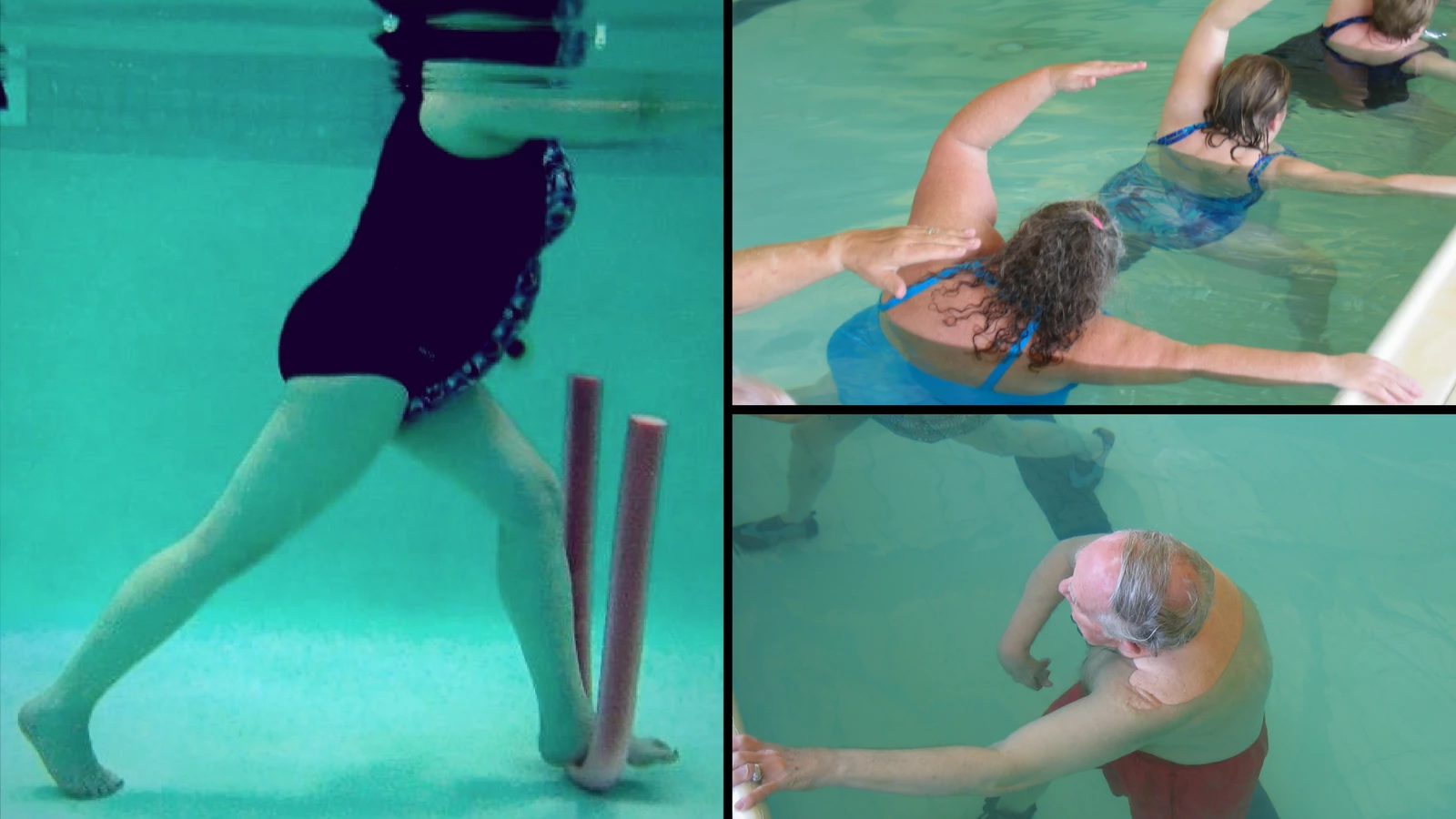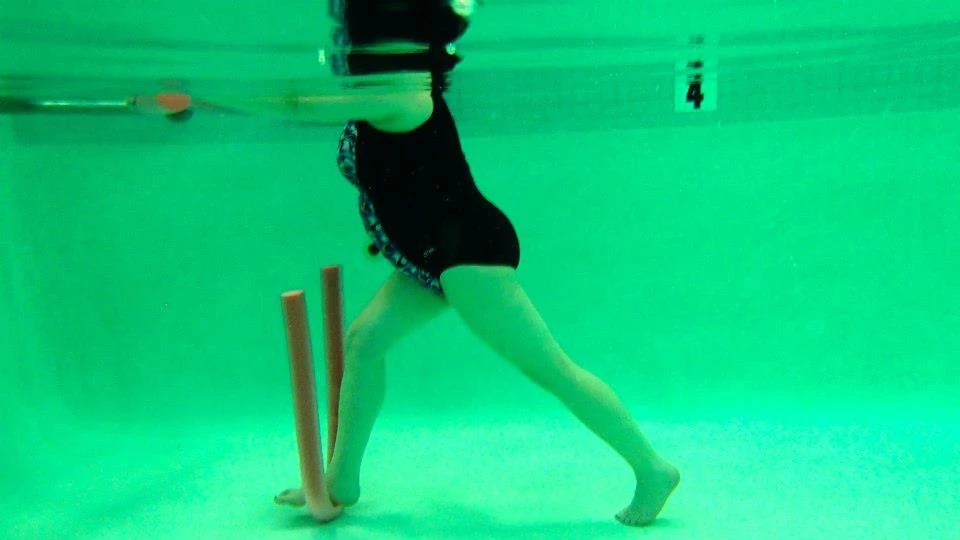Aqua Yoga: For an Accessible Yoga Practice, Just Add Water

The mechanics of maintaining good posture and moving energy in our aging bodies can prove taxing at times. With our senior population expanding, maybe it’s time to look at alternative ways or places to practice yoga.
Water Yoga for Healthy Aging
Scientists have proven that the human body is made up of mostly water—approximately 70 per cent. Seniors have always gravitated to exercise in the water. It is where their doctors often send them to lose weight. (You can double the number of calories burned in water compared to what you can burn on land.) Water is also a great place to rehabilitate a knee or hip that has been replaced or undergone surgery.
About 16 years ago I was asked by a director at a YMCA to develop a yoga practice in the water for diverse populations. Working with these populations was when I really began to understand bodies and how to help them become more stable and comfortable. I also learned how to make yoga practice translate to the water environment while maintaining the body/mind approach associated with it on land.
What I discovered, working with people dealing with fibromyalgia, arthritis, joint surgery, pregnancy, post-stroke complications, M.S., and being wheelchair-bound, was astonishing. People with severe conditions can improve their condition in the water, perhaps much faster than on land, and remain pain-free in the process.
As yoga teachers, we may have a few people with injuries in any given class. In the water, diverse populations are mostly the norm. The water environment is a great place to improve our knowledge and skills as yoga teachers in a short period of time.
3 Reasons to Try Yoga in Water
People take to water for their healing and general exercise because of the following three aquatic principles:
1. Buoyancy
-
Enhances flexibility and range of motion
-
 Improves pelvic floor health
Improves pelvic floor health -
Reduces weight on joints
-
Supports weak muscles
-
Decompresses the spine
2. Hydrostatic Pressure
-
Increases respiratory function
-
Improves circulation
-
Improves posture and trunk control
-
Reduces swelling in legs and ankles
-
Reduces blood pressure
-
Increases renal output
3. Water Viscosity and Resistance 
-
Educates muscles through slow, controlled movements
-
Tones muscles
-
Massages lymphatic system
-
Improves range of motion more than on land
-
Reduces resting and exercise heart rate
-
Increases sensory awareness
-
Improves balance
-
Improves proprioception
Assessing Student Ability for Aqua Yoga
Initially, when making an assessment of students’ abilities, I have them practice yoga asanas next to the pool wall, immersed in a comfortable 3.5 feet of water. As on land, a teacher can look at poses like Tadasana (Mountain) Palakasana (Plank) Urdva Hastasana (Hands Over Head Pose) Virabhadrasana 1 (Warrior 1) and a couple of others to see what could be meaningful to a particular person’s condition. Viewing asana from the deck can provide great insight initially, for example with students who have scoliosis. My experience with these students tells me that because they are “hugged by water” they have a greater ability to “breathe into the overworked kidney,” which can take ages to explain to a student in the gravitational field with limited body awareness.
If they have any contraindications, for example, no twisting or crossing the legs, they usually disclose those at the onset of their practice as they may well be in the rehabilitation phase of exercise, or in the long process of doctors deciding if they need a joint replacement. The wonderful thing about practicing yoga in the pool is that because joints are not stressed (if there is pain in hips or below then wearing a belt around one’s waist for additional buoyancy in deep water may be advisable), pain should diminish as soon as they are in the appropriate depth of water. Then we can emphasize strengthening glutes, quads, hip flexors and hamstrings in particular. Simply walking in the water with or without weights or buoyancy can help people make progress quickly.
Benefits of Aqua Yoga
 Practicing in the water can give us greater trunk stabilization, as moving through the water on all planes can strengthen the glutes and pelvic floor. As our lifespan is extending I think it is important to regard pain-free longevity as an important factor. I have come across so many people who have been practicing very powerful yoga for years until something gives out. The hips, knees and back can be susceptible to injury from over-stretching. I caution yoginis, especially in pregnancy, to avoid practicing full-range poses just because they can.
Practicing in the water can give us greater trunk stabilization, as moving through the water on all planes can strengthen the glutes and pelvic floor. As our lifespan is extending I think it is important to regard pain-free longevity as an important factor. I have come across so many people who have been practicing very powerful yoga for years until something gives out. The hips, knees and back can be susceptible to injury from over-stretching. I caution yoginis, especially in pregnancy, to avoid practicing full-range poses just because they can.
It really is never too late for a student to start addressing problems with the musculoskeletal body in the water. It is both safe and nourishing.
Inclusion-based Aqua Yoga such as a general open class can be practiced in pools of 84 degrees, which is pretty standard in most fitness centers. But for those that need therapeutic rehabilitation, temperatures around 92 degrees are preferred unless obesity and heart conditions require the water to be cooler. I am so encouraged that many YMCAs have two pools to accommodate both lap swimmers and those who prefer therapeutic practices.
In any event, I love the fact that with the baby boomer population maturing, which is the largest generation of people born in American history, newcomers and aging yogis alike do not have to give up their mindful practice. Instead, they can change the environment in which they practice.
The only thing lacking is enough yoga teachers who can reach out and bring a mindful practice to aquatic centers, YMCAs, hospitals, and VA and senior centers.
I was once asked by a student how many times I practiced yoga and I told her that it was a 24/7 kind of practice. I told her I was always trying to be conscious of posture, breath and mind. Sitting at a desk, standing in a line at a coffee shop or watching TV, we can choose to function with an awareness of our physical bodies.
Maybe this is where we can start with students who come to us perhaps with no yoga experience at all. We meet in an environment where they feel safe, and then begin the practice of yoga.
Read More fromYogaUOnline and Avital Scharf on Yoga Therapy: Improving Health and Well-being Naturally.

Camella Nair is a certified yoga therapist who specializes in Aqua yoga for diverse populations. She trains teachers and has written a book called Aqua Kriya Yoga. She can be reached at: www.camellanair.com or www.aquakriyayoga.com



